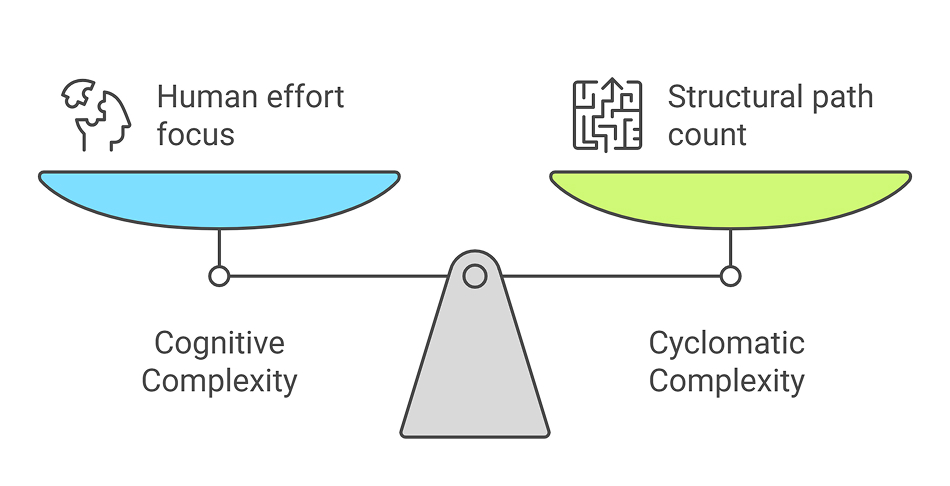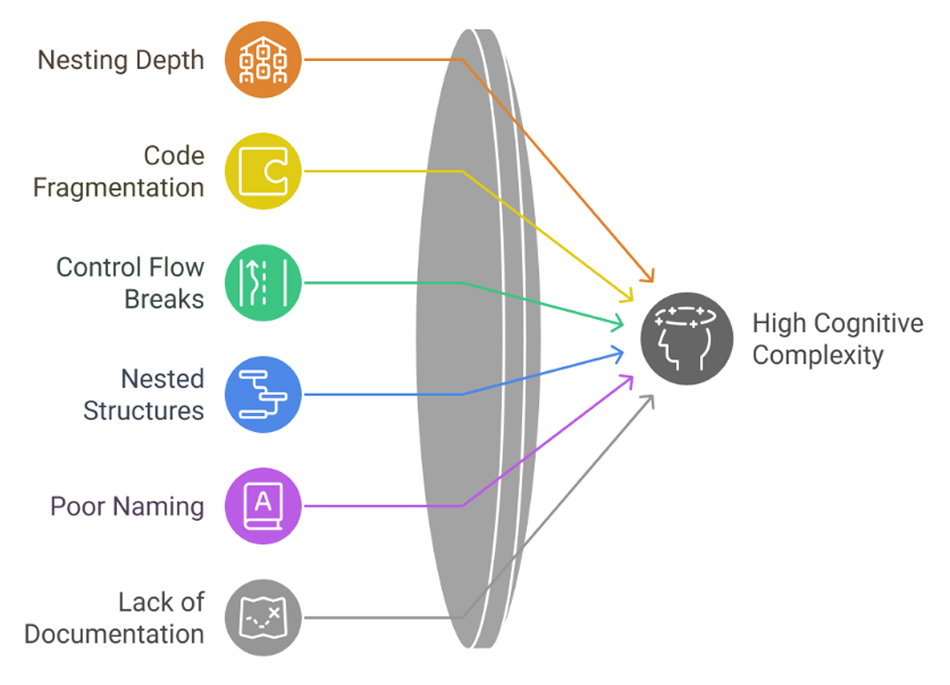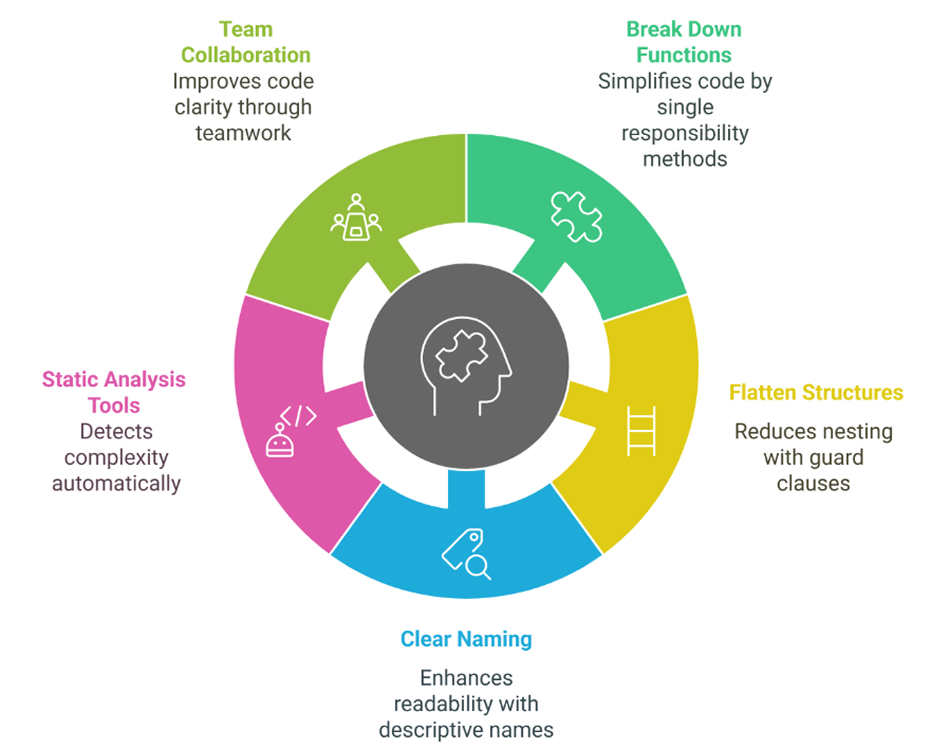Cognitive complexity measures how difficult code is to understand and maintain. Unlike traditional metrics such as cyclomatic complexity, which count decision points, cognitive complexity evaluates the mental effort required to parse code logic. This includes factors like nested conditionals, unclear naming, and abrupt control flows.

A 2020 study by the University of Stuttgart, which included 24,000 evaluations, found that code with higher cognitive complexity scores took longer to understand and was perceived as less intuitive. By accounting for readability and maintainability, this metric provides a more realistic assessment of the challenges developers face.
Reasons for Increased Cognitive Complexity

- Nesting depth: Each level of nesting adds mental overhead.
- Code fragmentation: Long methods or inconsistent naming obscure intent.
- Control flow breaks: Recursion or complex loops disrupt readability.
- Nested structures: Deeply nested loops or conditionals force developers to track multiple logic layers.
- Poor naming: Variables like temp or data lack context, increasing mental effort to deduce their purpose.
- Large functions: Lengthy methods with mixed responsibilities scatter logic, making it harder to follow.
- Lack of documentation: Without proper comments or documentation, developers have to spend extra time reverse-engineering the code to understand its intent.
High cognitive complexity correlates with higher bug rates, technical debt, and slower development cycles.
Cyclomatic Complexity vs. Cognitive Complexity
While both metrics address code quality, they serve distinct purposes:

A method with several nested loops and conditionals might have only a moderate cyclomatic complexity score but could be very challenging to read and understand, giving it a high cognitive complexity rating.
For example, a switch statement with 10 cases scores 10 in cyclomatic complexity but may have low cognitive complexity if the logic is straightforward. Conversely, a single method with nested loops and conditionals might have moderate cyclomatic complexity but high cognitive complexity due to readability challenges.
Tools like SonarQube prioritize cognitive complexity for assessing maintainability, reserving cyclomatic complexity for test coverage analysis.
How to Reduce Cognitive Complexity: 5 Practical Strategies

1. Break Down Large Functions
Large, monolithic functions often try to do too much, which makes them hard to understand and maintain. To simplify:
- Split into smaller functions: Divide the code into methods with a single responsibility.
- Example: Instead of embedding input validation within business logic, extract it into a dedicated function like ValidateInput().
- Benefits: Improved testability, easier debugging, and better organization.
2. Flatten Nested Structures
Deeply nested if-else statements create unnecessary complexity, making code hard to follow. Instead, use guard clauses or early returns to simplify the logic.
Before (nested conditionals):
if (user != null) {
if (user.isActive()) {
processUser(user);
}
}After (guard clause):
if (user == null || !user.isActive()) return;
processUser(user);By reducing indentation levels, guard clauses make code more linear and easier to follow. This technique is particularly useful for handling edge cases upfront.
3. Adopt Clear Naming Conventions
Clear naming reduces the effort needed to understand what the code does:
- Use descriptive names: For example, use isLeapYear() instead of flag and calculateFinalPrice() instead of compute().
- Consistency: Maintain uniform naming conventions across the project to improve readability.
4. Leverage Static Analysis Tools
Static analysis tools can automatically detect areas of high cognitive complexity:
- Popular tools: SonarQube, ESLint, and Typo.
- Functionality: They identify deep nesting, excessive branching, and redundant logic.
- Integration: Incorporate these tools into your CI/CD pipeline to continuously enforce better coding practices.
5. Foster Team Collaboration
Collaboration helps identify and mitigate complex code:
- Code reviews and pair programming: These practices allow teams to catch unclear logic early.
- Knowledge sharing: Regular discussions about complexity reduction foster a shared understanding and establish best practices.
- Outcome: A more maintainable codebase and smoother onboarding for new developers.
Conclusion
Managing code complexity is essential for building sustainable software. By focusing on readability through smaller functions, clear naming, and collaboration, teams can reduce technical debt and accelerate development. As the old saying goes: “Code is read more often than written.” Prioritizing human-friendly code practices ensures your work stands the test of time.
